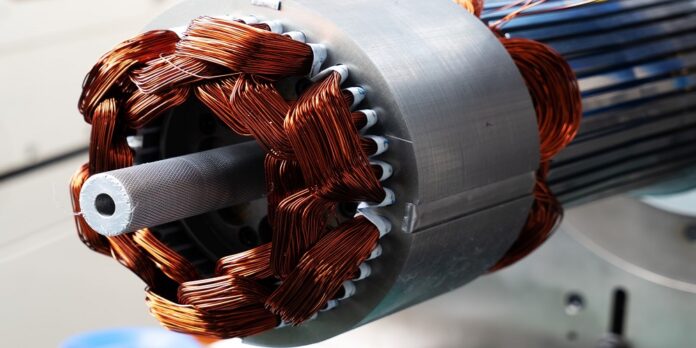In motor housings, there’s an electric motor. It comes with lots of important components that are beneficial and would enable the smooth and efficient conversion of electrical energy to mechanical energy. They also help to create an interaction between the motor’s magnetic field and the electric current.
This guide explains the several parts of an electric motor that you should know about:
Different Parts of an Electric Motor
There are six (6) major parts that can be found in an electric motor and they are:
1. The Bearings
In the electric motor, the rotor is usually given support by the bearings. This allows it to turn its axis on. The motor housing further gives support to the bearings. From where the load is applied, the motor shaft enters the outer part of the motor through its bearings.
2. The Rotor
This is described as the part of the electric motor that moves. It helps to deliver the shaft that bears the mechanical power. If you’re configuring, you must know that the conductors are laid in the rotor, and additions made to carry currents. These currents will further interact with the stator’s magnetic field to generate forces that will convert to a shaft.
3. The Stator
This is described as the stationary section of an electromagnetic circuit of the motor. It usually consists of permanent magnets or windings. The stator comes with a stator core which is made up of several thin metal sheets known as laminations.
The laminations are used to minimize the loss of energy that may occur if used with a solid core.
4. The Windings
The windings are simply wires laid in coils, and wrapped around an iron magnetic core (soft and laminated). When energized using current, the windings are used to create magnetic poles.
5. The Air Gap
While it can’t be physically seen or touched, the air gap refers to the distance that exists between the stator and the rotor. The air gap in your electric motor offers essential effects. It’s usually small and can affect the general performance of your motor.
The air gap is the main source that gives the motor low power which it operates on. Ensure that your air gap is minimal, because of the rate at which the magnetizing current boosts.
6. The Commutator
This is the final part of the electric motor. The Commutator serves as a mechanism, employee by the motor to turn on the input of a lot of DC and AC motors.
The Commutator consists of the slip-ring segments that are separated from the shaft and other parts. The amateur current of your motor is supplied by the stationary brushes that are in contact with the commutator which revolves. This further causes the reversal of the current and uses the best manner to introduce power to the machine when the rotor spins from one pole to another.
In the end, If there’s no reversal of current, the brake of your motor may stop.
Final Thoughts
Each one of the parts mentioned above may require replacement or repair at some point. This is where a good electric motor company is required.







